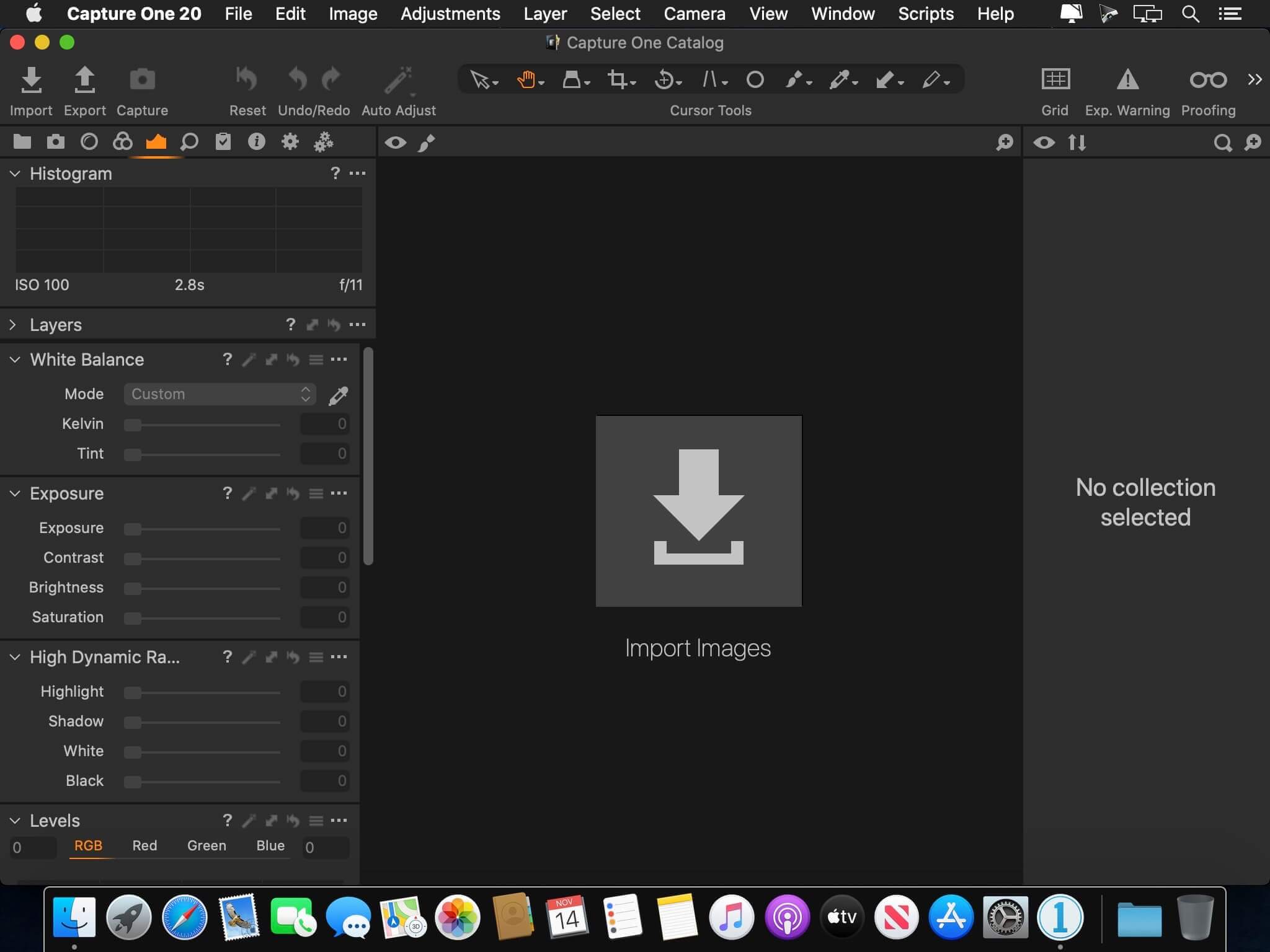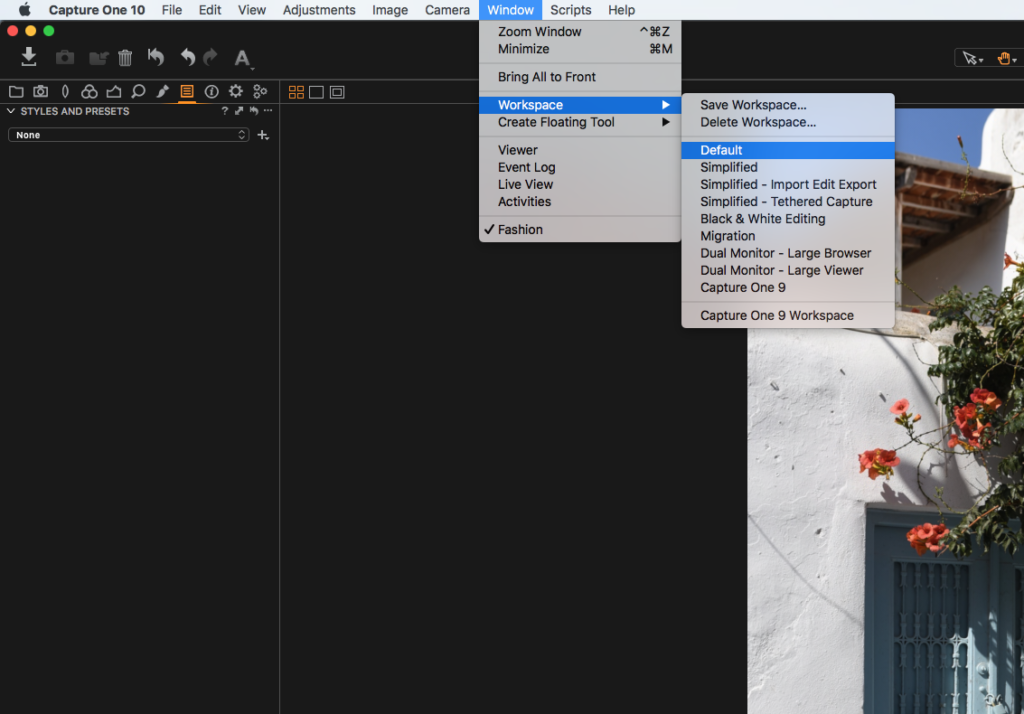Capture One is compatible with Windows operating systems. However, there are changes implemented in the operating system releases that can cause earlier versions of Capture One to perform poorly (or not at all). Check the table below to see which versions are compatible with your operating system.
Capture One Pro 10 now provides a whole new way of proofing the quality of your output. Until now, you have only been able to validate colors or zoom in and out of the image to see the quality of the file as it will appear if processed with no scaling changes.
Today’s cameras offer very high resolution. Therefore, exporting your file at maximum resolution is often unnecessary. You may want to deliver smaller JPEG files to your client for selection, or simply export images for your website.
But how do you insure your processed images have the right amount of sharpening, film grain or JPEG compression? With Recipe Proofing, new in Capture One 10, you can now view the image exactly as it will be processed, according to the selected Process Recipe.
- Historically, Capture One Pro software has been regarded primarily as an amazing RAW file converter for high-end cameras. With its newest release, Capture One Pro 10 goes well beyond its storied RAW conversions to become one of the most powerful image-processing applications on the market, addressing the imaging workflow from.
- Capture One Pro 10: Mastering Raw Development, Image Processing, and Asset Management. By Sascha Erni Jun 5, 2017. 3.8 out of 5 stars 23. Kindle $23.99 $ 23. 99 $31.99 $31.99. Available instantly. Paperback $31.86 $ 31. 86 $39.95 $39.95. Get it as soon as Thu, Nov 5. FREE Shipping by Amazon.
- Capture One 10 precisely controls the camera focus when tethering, and this feature is simply incredible. I wanted to put it through the paces in a lower light situation, having less contrast for the camera to focus on. I often capture nightscapes to create dramatic images for clients, and tethered capture improves that process.
- Capture One Pro lets you edit files from all major camera brands. Or, save on the same powerful software with a version that lets you edits files exclusively from Fujifilm, Sony or Nikon cameras. All four products include the same powerful editing and organizing tools.
Adjustments made to the image whilst Recipe Proofing is active are shown instantly. This means that you can deliver the exact the look and quality needed, even for a small file.
One can even see JPEG compression artifacts if processing out to JPEG.
Typically, the goal is to have as small of a JPEG file as possible, with the right quality for your need. Now, it is as straightforward as adjusting the JPEG quality slider in the Process Recipe, to immediately see the impact.
Images for Web Use
When I process images out of Capture One for the web, I still want the highest possible quality.
Before Capture One 10, I was processing out to a 50% size TIF file. Then, in Photoshop, I downsized the image to a width of typically 1600 pixels. The downsizing process actually makes the image look softer compared to the 100% view in Capture One. This is a logical consequence of downsizing. Therefore, I need to re-sharpen the file.
Finally, I save it as a JPEG file with a specific compression setting.
Capture One Pro For Windows
However, I still need to check the final, compressed JPEG quality for “ringing” artifacts and banding in smooth transitions.
Now, in Capture One 10, all these steps are made redundant by simply using the “Recipe Proofing” option.
Recipe Proofing
Recipe Proofing requires that a Process Recipe is first selected in the Process Recipe Tool. For this example, I have chosen a Process Recipe named “JPEG sRGB 1600 Pixels for web”.
The Recipe Processes to a JPEG file with Quality set to 50. The ICC Profile is sRGB and I have chosen a scaling of 1600 pixels on the long edge of the image.
Capture One 10’s new default workspace contains a shortcut on the toolbar to activate recipe proofing. A red circle above the image marks this.
Once activated, the selected image in the viewer shows a “Proofing” label (See above image).
In this mode, the viewer will display the image according to the recipe. So, now zooming to 100% means 100% of the output size. This way, I can see the file exactly as it will look when processed and I can also check the sharpness and the quality of the JPEG compression.
Output Sharpening
To compensate for lost sharpness, caused by the downsizing of the file, I could just add some more sharpening in the Sharpening tool. However, I would then need to change it again if I were to process the same image with different scaling. To deal with this issue, we have added another new Capture One 10 feature that allows you to add Output Sharping to a Recipe.
In the Adjustments tab for the selected Recipe, sharpening is set to “Output sharpening for Screen” with a Radius of 0.6 pixel and an Amount of 80. With Recipe Proofing active, dragging any of the sliders gives live feedback in the Capture One viewer. Image update speed during Recipe Proofing may be slower, as it requires more processing.
Setting the Right JPEG Compression
The following image is good to show JPEG compression artifacts as it has smooth tonale transitions as well as fine high contrast structures:
Underneath, it’s illustrated how I have zoomed in to 200% with Recipe Proofing mode activated. Normally, I recommend validating the file at 100% view, but in order to make it easier to see the differences when choosing different JPEG qualities, I use 200% view.
The image to the left uses JPEG Quality 0. In this image, the “ringing” artifacts around the antennas are obvious. The image in the middle uses Quality 50. Here, the ringing is much less noticeable. The image to the right uses Quality 100 and here no JPEG artifacts are visible.
The Process Summary Tool shows approximately how big the file will be. In the example above the file increases from 175kb to 245 kb to 1Mb. So, if you find that 50% quality works for you, then you will have a file that is four times smaller than using Quality 100. Consequently, the upload of files to a client, or Image loading on a webpage, will also be four times faster.
Capture One Pro 10 Tutorial

Film Grain


With Recipe Proofing, it has also become super easy to use Film Grain on scaled images as you can view the effect exactly as it will appear in the final image.

Recipe Proofing in Capture One 10 simply provides a much more efficient workflow with full control of the image quality whenever you need to resize images.

If you want to try out the proofing and sharpening, together with a lot other new features, you can download a free 30-day trial or visit our online software shop to upgrade, subscribe or buy a new license.
If you have any questions about the new Capture One Pro 10, please feel free to add a comment.
Niels,
Capture One Pro 10 Torrent
The Image Quality Professor
The Image Quality Professor
Capture 1 Pro 10
The digital pioneer, Niels V. Knudsen, is Phase One’s Image Quality Professor and founder of the IQP blog. Moreover, he is responsible for breakthrough advancements in image quality both in Phase One’s medium format camera systems and in Capture One Pro.
